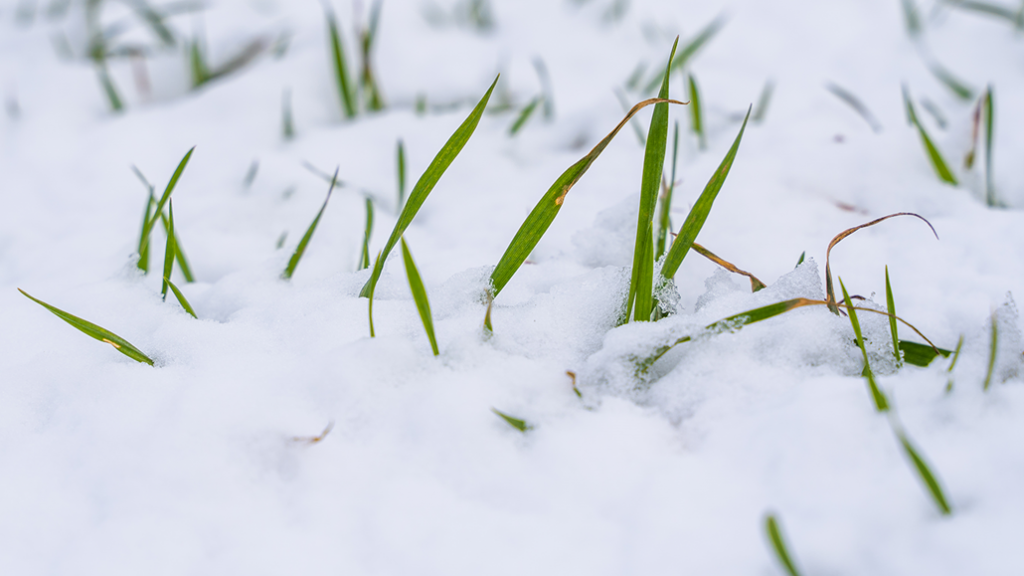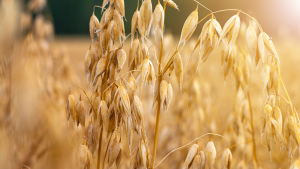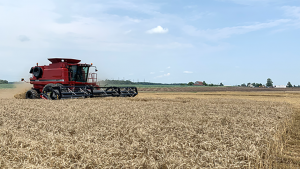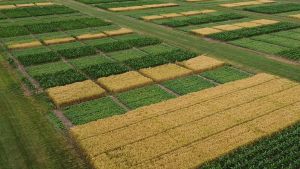Winterkill in winter wheat
BETTER PREDICTIONS

DESPITE WINTER WHEAT’S significance to the environment and to Ontario’s grain industry, big questions remain about some of the basic mechanisms that help it survive under tough conditions.
Specifically, little is known about the survival of winter wheat under low-temperature flooding and ice encasement (LTFIC) in Ontario climates. That lack of understanding makes farmers vulnerable when trying to select seed, and later, to manage their crop.
It is also limiting the crop’s profitability potential, which is significant: under current planting rates, each per cent increase of survival can result in $1 million more in returns.
University of Guelph researchers Dr. Eric Lyons, Dr. David Hooker and Dr. Helen Booker are addressing this situation by working towards what they call the Eastern Canada Winter Cereal Survival Model. It is an initiative that will help farmers monitor cumulative winterkill days, manage risk, and decide earlier in the year about whether it is worth investing in fall fertility to increase plant size and the potential survival of winter wheat.
SURVIVABILITY
LTFIC conditions significantly reduce winter survival of winter wheat through direct kill, or by increasing the risk of winterkill by reducing hardiness prior to early spring thaw-refreeze events. Survival variation under ice encasement in other winter wheat-growing regions ranges from two to 13 days.
The cause of plant injury and death under these anaerobic conditions is also not well understood, says Lyons, limiting selection for improved varieties based on morphological and physiological traits. The researchers will also look at historical lines that they say may possess superior adaptive strategies that have been lost because of selective breeding in the absence of severe winter environmental stresses.
The researchers’ efforts will include refining and validating the current Ontario-area LTFIC map based on the components of winterkill — such as snow mould, frost heaving, and ice casement. This advancement will help agronomists and other professionals make data-based variety recommendations for specific growing regions.
Lyons believes this research could reduce risks associated with winterkill and create more profitable farms systems. He, Hooker, and Booker believe their model will ultimately lead to elite winter wheat varieties that are better adapted to the Ontario climate and preserve yield for Ontario farmers.
“Having superior varieties will allow a greater number of farms to adopt winter wheat in rotation, resulting in better sustainability of the farm,” says Lyons.
SIGNIFICANT LOSS
There’s a lot at stake during years plagued with LTFIC. Icy conditions during the 2018-2019 growing season were mostly blamed for almost a 30 per cent drop in winter wheat production, nearly a 25 per cent reduction in harvested acres, and more than a six per cent drop in yield. Based on the average cash price of Ontario winter wheat (2004-2018), that loss is estimated to be over $102 million.
“Climate models predict that with climate change, there will be increased variability in winter weather resulting in more thaw and refreeze events and a greater chance of formation and ice encasement from melting snow refreezing,” says Lyons.
Previous winterkill studies in Canada focused on winter wheat varieties in Western Canada. However, those studies have limited application in Ontario due to the differences in causes of winterkill. So Lyons, Hooker, and Booker will focus on traits associated with the survival of winter wheat specifically in Ontario, to help breeders develop varieties for tolerance to LTFIC and allow Ontario farmers to plant winter wheat in areas that experience LTFIC.
“I am excited about this research because it has the potential to help with recommendations to farmers regarding planting date and fertilizers, and also will help breeders start to identify traits associated with survival of the types of winterkill we experience in Eastern Canada to help breeders select better varieties for our region,” says Lyons. “And as a physiologist I am excited about this project because it brings together agronomy, physiology, and breeding to help solve a problem for Ontario farmers.”
The project was funded in part by the Ontario Agri-Food Innovation Alliance, a collaboration between the government of Ontario and the University of Guelph. •




















